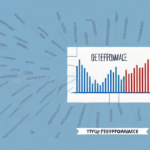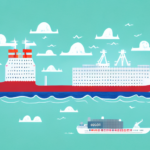The Impact of US Trade Policies and the US-China Trade War on Shipping
The United States economy significantly influences the global shipping industry through its trade policies and international relations. The imposition of tariffs by the US government on various goods, including steel, aluminum, and consumer products, has had profound effects on shipping dynamics. According to the U.S. Census Bureau, these tariffs have led to increased costs for imports, making goods more expensive for consumers and reducing overall demand for shipping services.
Moreover, the ongoing US-China trade war has escalated these impacts. The trade war, which began in 2018, has resulted in the imposition of billions of dollars in tariffs between the two largest economies. This has decreased trade volumes between the US and China, leading to a decline in container shipments. Data from the World Shipping Council indicates a noticeable reduction in container volumes from Asia to the US since the initiation of the trade war.
Shift in Trade Routes and Supply Chains
In response to tariffs, many companies have adjusted their supply chains to minimize costs. This includes shifting production and sourcing to countries like Vietnam and India, resulting in altered shipping routes. These changes often lead to increased shipping times and costs, as well as congestion in ports accommodating redirected shipments.
Economic Uncertainty and Industry Challenges
The uncertainty stemming from trade tensions can lead to reduced investment in the shipping industry. Additionally, the possibility of retaliatory tariffs creates a volatile environment, making long-term planning difficult for shipping companies.
Technological Advancements and Their Role in the Shipping Industry
Technological innovation plays a critical role in enhancing the efficiency and resilience of the shipping industry. Technologies such as blockchain, artificial intelligence (AI), and the Internet of Things (IoT) are transforming operations across the sector.
Blockchain for Supply Chain Transparency
Blockchain technology offers secure and transparent transactions, enabling real-time tracking of goods throughout the supply chain. This enhances communication and collaboration among stakeholders, reducing the risk of fraud and errors. According to a report by McKinsey & Company, blockchain can potentially save the shipping industry billions by improving efficiency and reducing costs.
Artificial Intelligence and Predictive Analytics
AI and predictive analytics help shipping companies optimize routing, manage fuel consumption, and improve safety. These technologies analyze vast amounts of data to forecast demand, predict maintenance needs, and enhance decision-making processes.
Internet of Things (IoT) for Real-Time Monitoring
IoT devices provide real-time data on cargo conditions, such as temperature and humidity, ensuring that goods are transported under optimal conditions. This is particularly crucial for perishable goods and sensitive electronics.
The COVID-19 Pandemic and Labor Market Dynamics in US Shipping
The COVID-19 pandemic has had a profound impact on the US shipping industry, disrupting supply chains and altering labor market dynamics. The pandemic-induced restrictions led to delays and cancellations of shipments, as well as operational challenges at ports and terminals.
Supply Chain Disruptions
Global supply chains experienced significant disruptions due to lockdowns and reduced workforce availability. According to the Bain & Company, container shipping rates surged by over 600% between 2020 and 2021, reflecting the heightened demand and limited supply.
Labor Shortages and Workforce Adaptation
The shipping industry faced labor shortages as workers fell ill or had to quarantine. To address this, companies implemented new safety protocols, increased inventory levels, and adapted shipping routes to meet changing demands.
Adoption of Contactless Technologies
To minimize physical contact and ensure safety, the industry adopted contactless delivery methods, including the use of drones and robots for last-mile deliveries. These technologies not only enhanced safety but also improved delivery efficiency.
E-Commerce Growth and Its Influence on the Shipping Sector
The exponential growth of e-commerce has been a major driver of demand in the US shipping industry. With consumers increasingly shopping online, the need for efficient and reliable shipping services has surged.
Surge in Online Retail
The shift towards online shopping, accelerated by the pandemic, has led to a significant increase in parcel volumes. According to Statista, e-commerce sales in the US reached $870 billion in 2021, up from $600 billion in 2019.
Investment in Last-Mile Delivery Solutions
Shipping companies have invested in innovative last-mile delivery solutions to meet consumer expectations for fast and reliable deliveries. This includes same-day delivery services, crowd-sourced delivery networks, and automated delivery systems.
Enhancing E-Commerce Capabilities
To capitalize on the e-commerce boom, shipping companies are optimizing their operations through digitization and data analytics. These advancements enable better inventory management, route optimization, and customer service.
Current Trends and Strategies in Navigating Economic Uncertainty in Shipping
The shipping industry continuously evolves to navigate economic uncertainties and market fluctuations. Current trends and strategies include digitization, diversification, sustainability initiatives, and forming strategic partnerships.
Digitization and Automation
Embracing digital technologies and automation enhances operational efficiency and reduces costs. Implementing advanced data analytics allows companies to make informed decisions and anticipate market changes.
Diversification of Services and Markets
Shipping companies are diversifying their service offerings and exploring new markets to mitigate risks associated with economic downturns. Expanding into niche markets or offering specialized services can create additional revenue streams.
Sustainability and Environmental Responsibility
With increasing regulatory pressures and consumer demand for eco-friendly practices, the shipping industry is focusing on sustainability. Initiatives include using alternative fuels, optimizing shipping routes to reduce emissions, and implementing waste reduction programs.
Strategic Partnerships and Collaborations
Forming partnerships with other industry players can enhance resource sharing, knowledge exchange, and operational synergies. Collaborations with technology providers can also drive innovation and improve service offerings.
Case Studies: Sector-Specific Impacts on US Shipping
The shipping industry is influenced by various sectors within the US economy, each with unique demands and challenges.
Construction Industry
The construction sector heavily relies on shipping services to transport raw materials such as steel and cement. Fluctuations in the construction industry's activity directly impact shipping demand. For instance, a boom in infrastructure projects increases the need for bulk cargo shipping.
Automotive Industry
The automotive industry is another key driver of shipping demand, requiring the transportation of vehicles and parts both domestically and internationally. Changes in automotive production levels, influenced by consumer demand and economic conditions, can significantly affect shipping volumes.
Technology Sector
The rapid growth of the technology sector, with its demand for electronic components and finished goods, also plays a crucial role in shaping shipping trends. The increasing complexity and sensitivity of tech products necessitate advanced shipping solutions to ensure timely and safe delivery.
The Future Outlook of the US Shipping Industry
Despite facing numerous challenges, the US shipping industry is poised for transformation and growth. The integration of advanced technologies, commitment to sustainability, and adaptability to changing market conditions will shape its future.
Adoption of Green Technologies
Environmental sustainability will continue to drive innovation in the shipping industry. The adoption of green technologies, such as alternative fuels and energy-efficient vessels, will be essential in reducing the industry's carbon footprint.
Digital Transformation
Digital transformation initiatives, including the use of AI, blockchain, and IoT, will enhance operational efficiency, transparency, and customer satisfaction. These technologies will enable shipping companies to better manage supply chains and respond to market demands swiftly.
Resilience and Adaptability
The ability to adapt to economic fluctuations, geopolitical tensions, and unforeseen disruptions will determine the resilience of the shipping industry. Companies that prioritize agility and continuous improvement will thrive in the evolving economic landscape.
As the US economy continues to influence global trade dynamics, the shipping industry must remain proactive in adopting innovative solutions and strategies to sustain growth and competitiveness.








